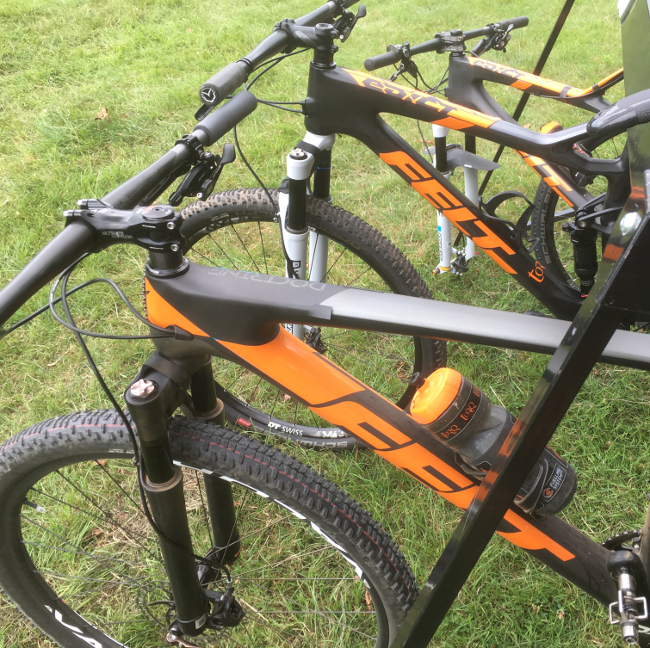Many 24 hour events offer a popular ‘Team’ category whereby you can club together with other like-minded individuals and share the 24-hour load between you in a relay type arrangement. It sounds easier than competing solo and in many ways it is (you don’t have to travel as far for starters), but at the same time it does bring a unique set of challenges, which we will discuss here. Don’t read this section if you haven’t read the other sections though, because we refer back to concepts that have already been discussed. We want you to get this right!

Fundamentally, if you’re 24-hour racing in a team, although you won’t be covering the same distance as you would have done as a soloist, the intensity of your efforts will be much higher. Soloists rip through carbohydrate as a fuel source on the basis that they are doing such a huge volume of exercise, but this carbohydrate burn is supported by a steady and solid fat-burning base.
At higher exercise intensities, the proportion of energy derived from carbohydrate is much higher in relation to fat, so although you won’t be doing the volume of exercise, the exceptionally high carbohydrate burn rate will mean that you will need to be as fastidious with your fuelling as if you were competing as a solo. If you don’t get your fuelling right, you will find your lap times slowing significantly towards the end of the event and the worse your fuelling is, the sooner it will happen! Bear in mind that if you start the event with full carbohydrate stores and don’t take on any additional fuel, at high intensity, you’re going to be lucky to get 2 hours of ‘effort’ delivered before you bonk or hit the wall!
In team events, you’ve got two opportunities to take on fuel and that’s during your exercise effort and between laps when you’re racing. Let’s look at both of these separately:
During your exercise effort: The mountain of research around which the TORQ Fuelling System is constructed indicates that more than 90g of carbohydrate per hour delivered via TORQ’s products offers no performance benefit. Anything in excess of 90g per hour won’t be digested and absorbed and is likely to cause stomach discomfort. You should however aim to get your fuelling intake as close to 90g (3 TORQ Units) per hour as possible so that you achieve the full benefits. The most important point to remember is to consume a gel a couple of minutes before the baton is passed to you. This is easy to manage, because most 24-hour events have a reasonably large arena and you should be able to see when your team mate comes into view (your cue to fuel). Having an idea of the lap times of your preceding team mate can also help with your timing too. Take the gel and set off on your lap.
The reason this gel intake is significant is because the human body will do 2 things with ingested carbohydrate. It will either store it as glycogen, which is a very slow process and takes place at rest, or burn it directly without storing it, which will only take place when exercising. By taking this gel at the start of your lap, you are putting carbohydrate into your blood that your muscles will burn directly during your effort, sparing your stored glycogen.
Failure to take a gel will mean that your physiology has no choice but to release glycogen from your stores, accelerating the arrival of ‘the bonk’ or ‘wall’ – the very thing you should be trying to avoid.
Continue on your lap following the TORQ Fuelling System, which will invariably mean consuming Energy Drink, Gels, Bars or Chews. If your lap is an hour long, you will need to consume another 2 TORQ Units to hit the magic 90g of carbohydrate per hour or just one unit to consume a sub-optimal but acceptable 60g per hour. All energy products are not made equal, so do your research. Fuelling with 90g of carbohydrate per hour with the wrong fuel will not work and will cause bloating and indigestion.

Between laps: The moment you finish your lap, the enzyme ‘glycogen synthetase’ (the enzyme that helps you to store carbohydrate) will be very active and also the ‘Glut4’ gates to the muscles will be open – these gates allow carbohydrate to flow into the muscles without the need for insulin release. To understand more about the role of insulin, read through the tabs at the bottom of the Diabetes menu page on our website, but if we’re confusing you right now, what we’re trying to say is that immediately after exercise is a very good time to take more carbohydrate into your system.
The beauty of team events is that if you consume too much fluid, it doesn’t matter, because you can just go to the toilet between laps without it affecting your team’s performance.
The first thing to do therefore is to consume a strong energy drink or recovery drink. You need to be looking at consuming around 20-25g of protein every 4 hours anyway, so if you’re in a team of 4 doing 1-hour laps it would actually work perfectly to consume a Recovery Drink immediately after each of your laps as this contains the protein you need and the carbohydrate.
As we have explained in the previous sections however, what may seem logical and practical won’t necessarily satisfy your food cravings and settle your stomach over a 24-hour period, so you will need an adaptive strategy. Make sure you have some ‘real food’ protein options available too, but remember, as with soloing, you MUST choose low fat options or all the useful calories will back-up behind a cork of fat and won’t be absorbed.
We have also previously mentioned that as well as TORQ Recovery Drink, there are other options in the TORQ range available as vehicles to deliver high quality protein and carbohydrate which include TORQ Recovery Bars, TORQ SNAQ Breakfasts and TORQ SNAQ Meals. Alternatively, choose your supermarket food carefully so that you have food that delivers high quality protein and carbohydrate without the fat.
Once you’ve had your post-exercise feed, chill out, relax and let everything digest. If it’s hot, make sure you maintain a good fluid intake and if you feel hungry, keep grazing, but don’t over-consume on calories or you’ll feel bloated and have to carry it all around your next lap.
When your next lap is on the cards, take that pre-lap gel and repeat the whole process. Once again, as with the soloists, if you do find that you’ve over-consumed on calories and got the carbohydrate/fluid balance wrong, just drink plain water until you start to feel normal again – this feeling of normality is likely to be followed fairly quickly with a ravenous hunger, so feed again, but don’t overdo it.
TORQ’s Fitness Consultancy has a huge amount of experience in this area, so please don’t hesitate in contacting us on 0344 332 0852 or enquiries@torqfitness.co.uk if you would like to discuss more.






